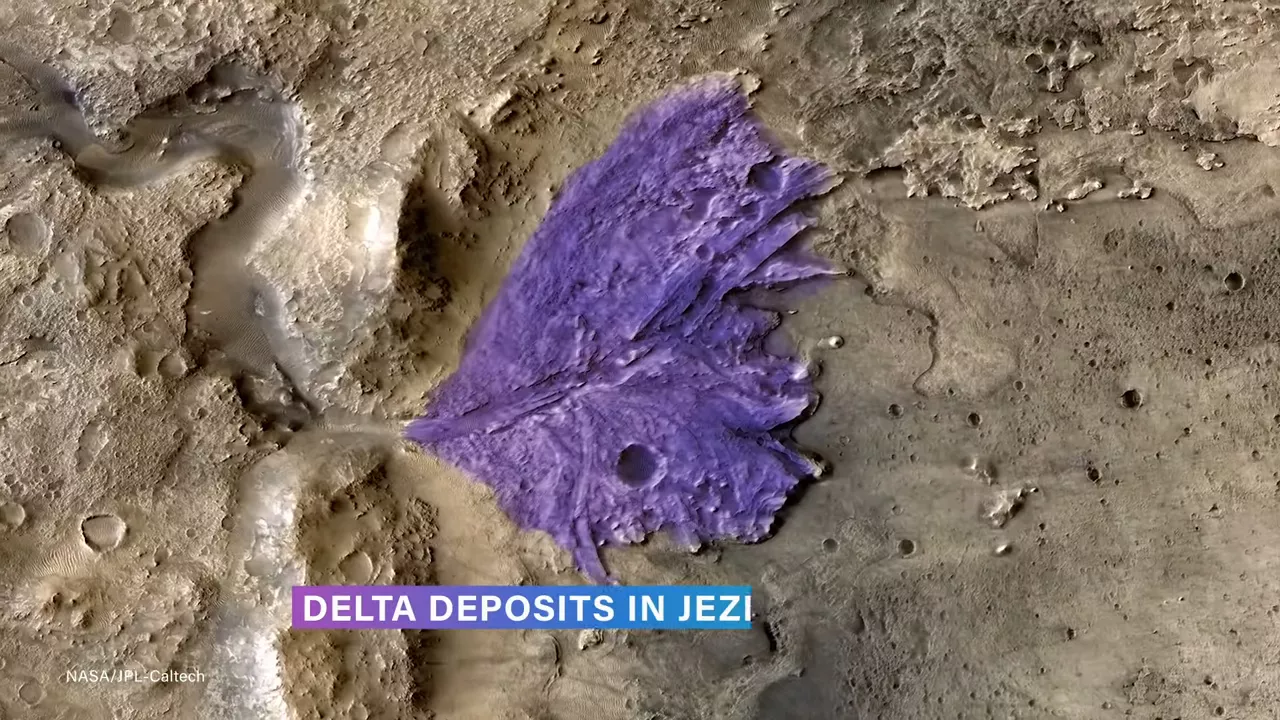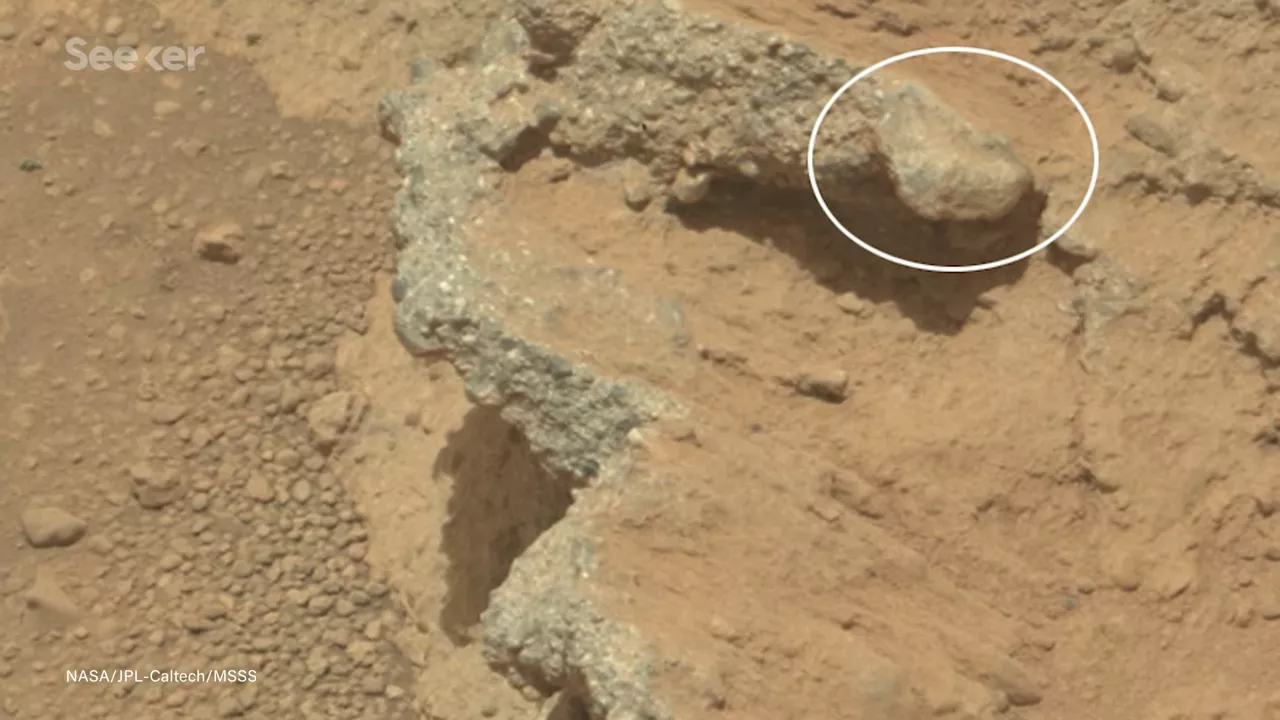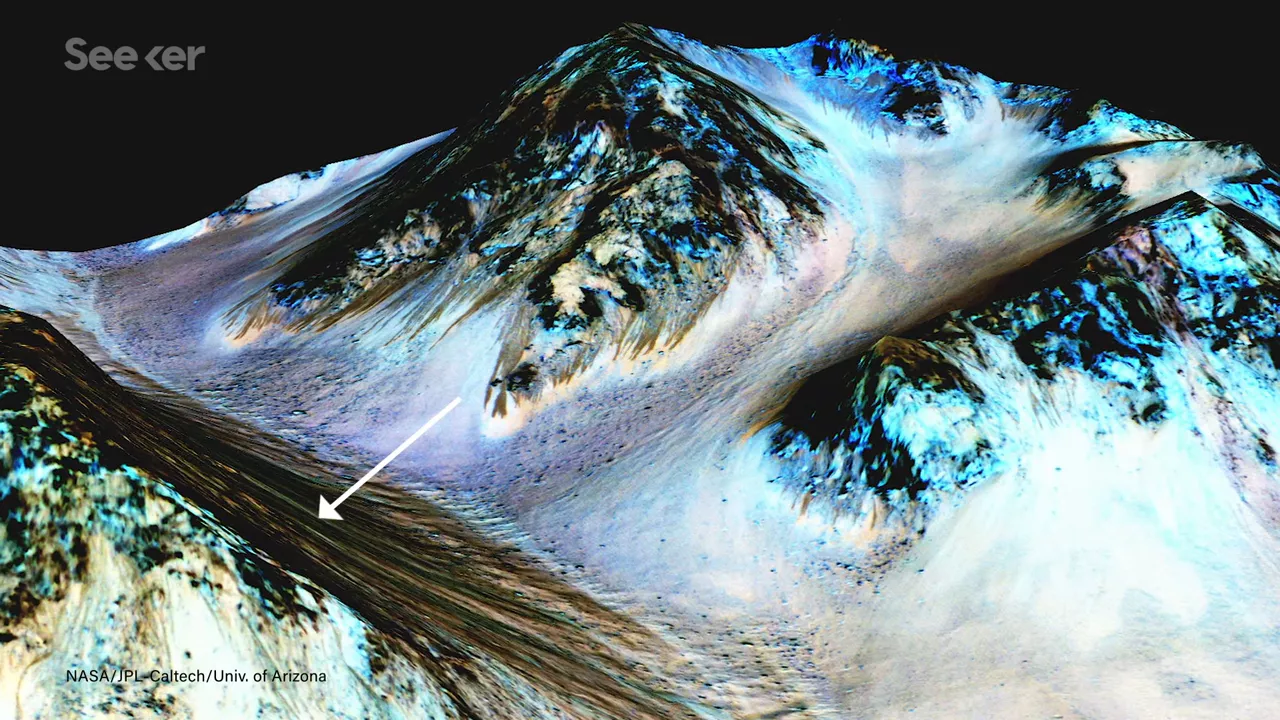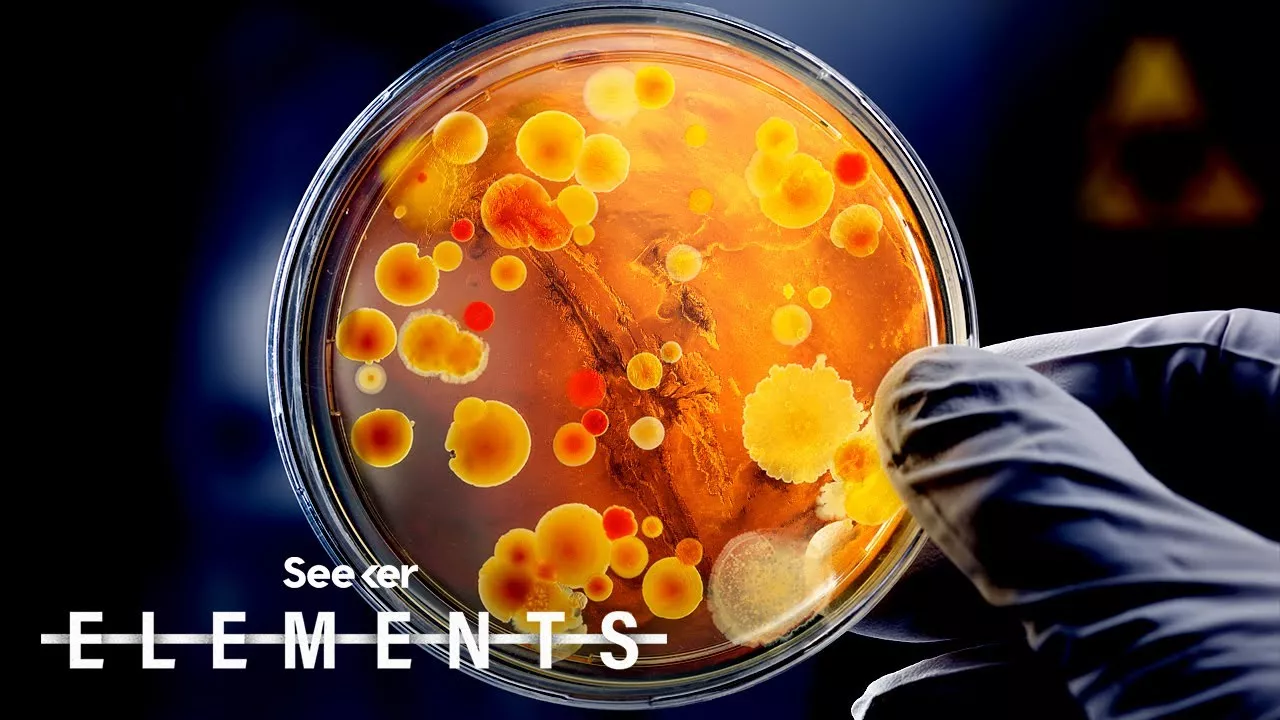Perseverance, the Mars 2020 rover, which is expected to land on the red planet in February of 2021. And one of its main jobs? Finding signs of ancient microbial life on Mars.
But wait, haven't we already found signs? What more evidence do we need, and how much do we actually have so far?
Before we get into actual life forms, we have to talk about water. Most astrobiologies agree that liquid water, or at least some kind of liquid solvent, is arguably the most important variable in our continued search for life everywhere, including on Mars.
For a long time, the best image we had that indicated the prior presence of water was this picture. It’s possible that this riverbed and canyon formation could have also resulted from wind flow, glacial ice, volcanic lava, or liquefied CO2, but experts believe that the best explanation for this very specific shape and pattern was repeatedly flowing water.
It’s possible that this riverbed and canyon formation could have also resulted from wind flow, glacial ice, volcanic lava, or liquefied CO2, but experts believe that the best explanation for this very specific shape and pattern was repeatedly flowing water.
There are lots of other convincing geological features on the surface of Mars that make a pretty strong case for the fact that the planet may have once had flowing, liquid water.  Plus in 2012, the Curiosity Rover phoned home to tell us it had found and examined a number of rocks that we now know were exposed to water billions of years ago.
Plus in 2012, the Curiosity Rover phoned home to tell us it had found and examined a number of rocks that we now know were exposed to water billions of years ago.  But what about water on Mars that’s liquid right now? The High Resolution Imaging Science Experiment or HiRISE camera aboard the Mars Reconnaissance Orbiter took pictures that showed us something we now call recurring slope linea, or RSL.
But what about water on Mars that’s liquid right now? The High Resolution Imaging Science Experiment or HiRISE camera aboard the Mars Reconnaissance Orbiter took pictures that showed us something we now call recurring slope linea, or RSL.  These dark streaks seem to fluctuate over time, appearing to flow down steep Martian slopes.
These dark streaks seem to fluctuate over time, appearing to flow down steep Martian slopes.  And this discovery made a huge splash at the time and was widely hailed as evidence of current water on Mars, but there are lots of voices who push back on this, saying it’s unrealistic to imagine that Mars could support flowing liquid water when its atmosphere is so thin and so cold. And new work argues that instead of water, it could be granular flow of sand and dust that makes these marks. So the debate about whether RSL indicate current flowing water on Mars still continues today.
And this discovery made a huge splash at the time and was widely hailed as evidence of current water on Mars, but there are lots of voices who push back on this, saying it’s unrealistic to imagine that Mars could support flowing liquid water when its atmosphere is so thin and so cold. And new work argues that instead of water, it could be granular flow of sand and dust that makes these marks. So the debate about whether RSL indicate current flowing water on Mars still continues today.
There’s also super cool evidence of liquid oceans inside Mars right now, but that’s kinda a whole separate story. And say we put water to the side entirely...what evidence do we have of actual life forms on Mars?
The biggest and most controversial is the infamous incident in 1996 when NASA announced they had found evidence of extraterrestrial life inside a meteorite that thudded to Earth from Mars. The ‘proof’? The combination of minerals and carbon compounds inside the meteorite seemed remarkably similar in makeup and form to what some microbes produce here on Earth. That’s what we call a bio signature. But in the years since, scientists have pointed out that non-living or abiotic processes are equally likely to have produced the same clumps of minerals that we were so excited to call fossilized evidence of life. Plus, follow-on work did find that the meteorite had been contaminated by Earth’s bacteria once it got here. So...eh? Over twenty years later, the debate still rages on.
But even though it didn’t give us a particularly satisfying answer, this meteorite did ignite a very important conversation. See one of the issues here is that we don’t have a very standard definition of what life is. And that makes finding definitive evidence of it...kinda hard. Other Martian missions have found traces of methane and formaldehyde on Mars, which are both produced by living things here on Earth...although they can be produced by non-living processes. And again, we have a kinda philosophical dilemma here because we only know how to look for the things we know about. It could be that life elsewhere in the solar system or the universe is marked by bio signatures that we don’t know about or don’t know how to look for... yet. And then there’s the whole question of where did life on Mars come from?! I mean...existential issues abound.
Given the fact that we’ve been studying Mars from home since the 1600s and from space since the 60s, what I’ve covered in this article is certainly not exhaustive. But it is a short summary of the most compelling evidence we currently have for life on Mars which...even after all that, are still just tiny hints on where to start. Nothing definite, but hopefully a good base from which to make progress.
When it lands, Perseverance will be happily digging around in Mars’ rocks for fossils, gathering samples to hang onto until future missions can hopefully ferry those samples back to Earth for further study. And it’ll eventually be joined by the European-Russian ExoMars rover. Some scientists are also pushing for these bots to search for genetic signs of current life on Mars too!
But whatever we look for, from the years past it’s pretty clear that whatever we find is going to need to be really solid evidence before we make any solid claims, and it may require a whole re-imagining of our frameworks for—and classification of—life itself. Because as Carl Sagan said, “extraordinary claims require extraordinary evidence”. Which, it’s pretty safe to say, we haven’t quite found...yet.


No comments yet